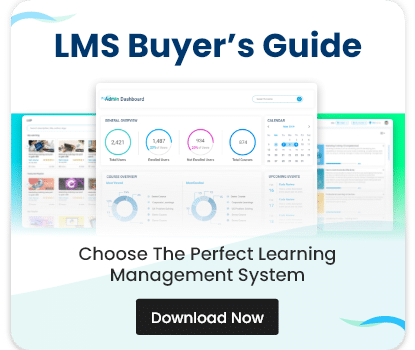Are you looking for ways to enhance your organization’s training and development programs? Have you considered leveraging e-learning to upskill your workforce? In today’s fast-paced and competitive business world, corporate e-learning has emerged as a powerful tool for training and development of employees. As organizations increasingly embrace remote work and digital transformation, e-learning is becoming an indispensable part of their learning and development strategy. However, designing and implementing effective e-learning programs can be challenging without proper planning and execution. That’s why in this blog, we will discuss seven best practices in corporate e-learning that can help organizations create impactful learning experiences for their employees.

We have
something for you!
Are you still figuring out which LMS is the best? Grab the chance to explore the LMS Buyer's Guide and get started.
















